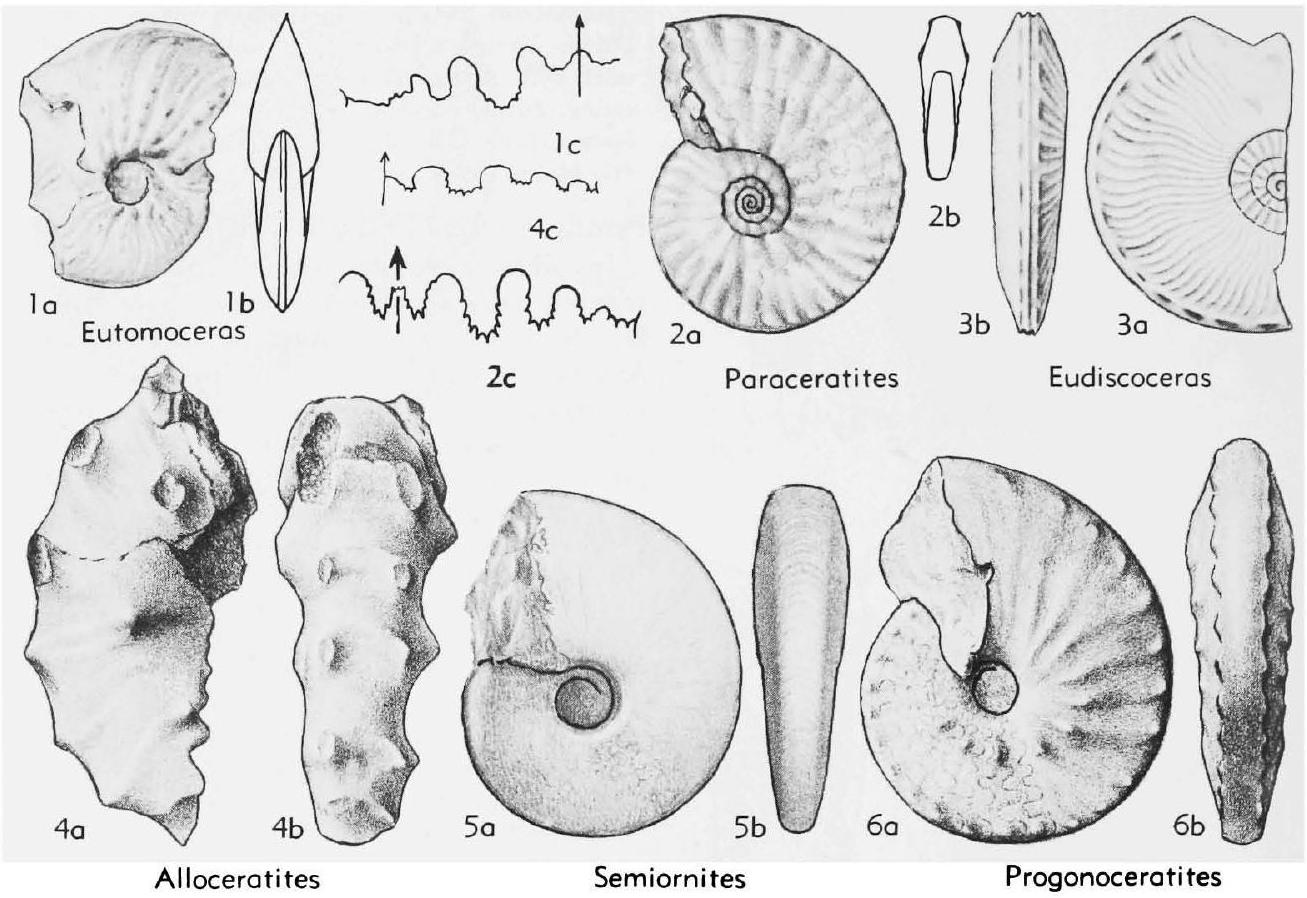Welcome to the Treatise on Invertebrate Paleontology!
Please enter a genera name to retrieve more information.

Paraceratites
Classification
Phylum:
Mollusca
Class:
Cephalopoda
Subclass:
Ammonoidea
Order:
Ceratitida
Suborder:
Ceratitina
Superfamily:
Ceratitaceae
Family:
Ceratitidae
Formal Genus Name and Reference:
Paraceratites HYATT, 1900 [non Kittl, 1903]
Type Species:
Ceratites elegans MOJSISOVICS, 1882
Images
(Click to enlarge in a new window)
Fig. 184,2. *P. elegans (Mojs.), Alps-Yugo., 2a, X0.7; 2b, X0.3; 2c, Xl (293')
Synonyms
Geographic Distribution
Eurasia, N.Am.
Age Range
Beginning Stage in Treatise Usage:
Anis.
Beginning International Stage:
Anisian
Fraction Up In Beginning Stage:
0
Beginning Date:
246.7
Ending Stage in Treatise Usage:
Anis.
Ending International Stage:
Anisian
Fraction Up In Ending Stage:
100
Ending Date:
241.46
Description
Rather involute, commonly compressed, discoidal, with subcarinate venter, typically trituberculate and with ribs that may become feeble. Saddles of suture less entire than in Ceratites.
References
Hyatt, Alpheus, 1900, Cephalopoda: in Zittel, K. A., Textbook of Palaeontology, 1st English ed., transl. Eastman, C. R., p. 502-592, fig. 1049-1235.
Museum or Author Information
Classification
Phylum:
Mollusca
Class:
Cephalopoda
Subclass:
Ammonoidea
Order:
Ceratitida
Suborder:
Ceratitina
Superfamily:
Ceratitaceae
Family:
Ceratitidae
Formal Genus Name and Reference:
Paraceratites HYATT, 1900 [non Kittl, 1903]
Type Species:
Ceratites elegans MOJSISOVICS, 1882
Images
(Click to enlarge in a new window)
Fig. 184,2. *P. elegans (Mojs.), Alps-Yugo., 2a, X0.7; 2b, X0.3; 2c, Xl (293')
Synonyms
Geographic Distribution
Eurasia, N.Am.
Age Range
Beginning Stage in Treatise Usage:
Anis.
Beginning International Stage:
Anisian
Fraction Up In Beginning Stage:
0
Beginning Date:
246.7
Ending Stage in Treatise Usage:
Anis.
Ending International Stage:
Anisian
Fraction Up In Ending Stage:
100
Ending Date:
241.46
Description
Rather involute, commonly compressed, discoidal, with subcarinate venter, typically trituberculate and with ribs that may become feeble. Saddles of suture less entire than in Ceratites.
References
Hyatt, Alpheus, 1900, Cephalopoda: in Zittel, K. A., Textbook of Palaeontology, 1st English ed., transl. Eastman, C. R., p. 502-592, fig. 1049-1235.
